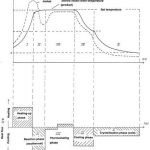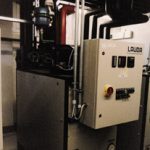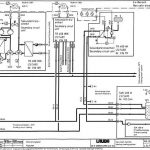Constantly changing processes for manufacturing different products require flexible adaptation of the equipment used in multi-purpose installations. This is particularly important for the heating and cooling technology as well as for the integrated control components.
Raimund Seliger, Alfred Semrau, Bernhard Thier
Specialised and fine chemicals as well as pharmaceuticals are mainly produced in multi-purpose installations. The equipment and installation of the batch systems are such that several process steps can be carried out on a single installation, in order to allow different products to be manufactured rapidly and flexibly without the need for extensive modifications. A high level of control technology ensures reproducible recipes as well as the required product quality. Seamless temperature control is essential for reliable mastering of the process. A pressure liquid circuit which prevents corrosion and simultaneously serves as a collector for any harmful substances that are leaked satisfies all the criteria for an effective temperature control system:
• flexible operation,
• a wide temperature range,
• no changeover to other energy sources,
• uniform heating and cooling medium,
• independent heating and cooling of reactors,
• good control facilities,
• integration in supervisory control systems,
• safety circuitry.
Additionally, an integrated cooling unit operates the process at low temperatures. Component operation allows energy savings and special control modes.
Sequence of the batch process
The typical energy balance and the timing sequence of the batch reaction allow six phases to be identified:
• heating-up phase until the set temperature is reached,
• reaction phase (endothermal, exothermal or at low temperatures),
• after-reaction phase (thermostating at a constant temperature),
• distillation/evaporation phase with a high energy supply,
• cooling-down phase to room temperature,
• deep-cooling phase (controlled crystallisation process in which the particle size, shape and surface of the product can be influenced).
As well as the general cyclic sequence of the batch process, there is also a possibility of additional physical-chemical processes such as evaporation, distillation or component addition, as well as reactions (e.g. build-up reactions) for various products.
In semi-batch operation the raw materials and additives are mixed at the beginning, while other components are not added until the initial mixture has been heated. In this case, metering and cooling of the process are possible to enable rapid reactions to be controlled as well.
Heat transfer system
Many processes in the chemical and pharmaceutical industries take place at temperatures between about -25 and +140 °C. Water-glycol mixtures with the following special properties are excellent media for heating and cooling in this range:
• extremely favourable heat transfer characteristics,
• non-flammability of the fluid,
• only limited need for safety circuits,
• problem-free disposal.
The upper limit of the temperature range is determined by the formation of the pressure system (water vapour pressure) and the thermal stability of glycol. Water is an ideal heat transfer medium; compared with organic/ synthetic media, its use results in an appreciable reduction in the dimensional design parameters (heat transfer surfaces, pressure loss, pump output, piping, fittings) and therefore also in considerable cost savings. In addition, the safety regulations are much less stringent than for systems that use flammable substances.
Heat balance
Exothermal reactions during the production of the material generate significant amounts of heat, which have to be removed through intensive cooling. Control of the reaction process can be influenced by the following parameters:
• metering of components,
• heat transfer (K number),
• stirrer speed (internal heat transfer),
• intensive cooling through high velocities (atmosphere-to-jacket heat transfer),
• flow nozzles.
Heating and cooling system
A typical multi-purpose installation for batch processes with evaporation, distillation and crystallisation cycles consists of the reactor, the condensation and cooling units and a storage vessel. The heating and cooling system for independent temperature control of different reactors consists of the secondary circuit units Type TR 400 HKK and TR 400 HK as well as a central cooling unit with buffer reservoir Type SUK 400 W. There is a decentralised-steam heat exchanger and a cooling-water heat exchanger for reactor heating. The deep-cooled heat transfer fluid is supplied directly to the apparatus via the secondary circuit; two pumps with an automatic stand-by circuit are used for circulating this fluid. The temperature is controlled by means of two three-way control valves, while another three-way valve switches automatically between cooling-water and deep-cooled operation. A spring-loaded relief valve limits the pressure in the reactor jacket to 6 bar.
On the primary side the site services provide saturated steam at 145 °C and cooling tower water at 32 °C; the deep-cooled rail is supplied with water/glycol mixture at -25 °C by a process cooling unit. A 2000 l cold store acts simultaneously as a unpressurised distributor, an energy store and an expansion vessel. 4.5 bar nitrogen blanketing permits aqueous medium temperatures up to +145 °C.
The glass condenser is approved for a maximum pressure of 1.5 bar; it is therefore coupled to the low-temperature system by means of a heat exchanger. The open expansion vessel in conjunction with the relief valve limits the pressure in the glass apparatus. The working temperature is usually below the cooling water temperature; the middle cooling rail is therefore not used. All the units have a controller on which the required temperature can be set. Constant supply pressure is ensured by a relief valve on each secondary circuit unit. In this way the pressures and flows can be adjusted to the individual consumers. The heat transfer units described here are designed according to standard modular principles. This results in compact heating and cooling systems ready for operation, constructed and tested in the factory and with guaranteed operating and performance data.
Control by three-way valves
Cyclic batch processes involve considerable differences in heating and cooling capacities. During the thermostatic phase in particular, there is only a small feed into the secondary circuit. Fine control with excellent results can be achieved during part-load operation thanks to the use of three-way control valves for distribution and mixing, by controlling the components (hot or cold) through the bypass. The special advantages of control with three-way control valves are as follows:
• The flow remains constant irrespective of the control setting.
• Continuous flow prevents icing-up or steam flashing in the supply system.
• The pressure system remains unaffected by the control.
• If no energy is withdrawn by the con-sumer, the circulating heat transfer fluid is added to the return of the primary system (return addition).
• By providing a three-way changeover valve and using two three-way control valves, it is possible to select the component which uses least energy (e.g. cold or cooling water).
Lauda
Fax: ++49/9343/50 32 22
Further information cpp-250
Unsere Webinar-Empfehlung
Die Websession „Wasserstoff in der Chemie – Anlagen, Komponenten, Dienstleistungen“ (hier als Webcast abrufbar) zeigt technische Lösungen auf, die die Herstellung und Handhabung von Wasserstoff in der chemischen Industrie sicher machen und wirtschaftlich gestalten.
Ob effizienter…
Teilen:













